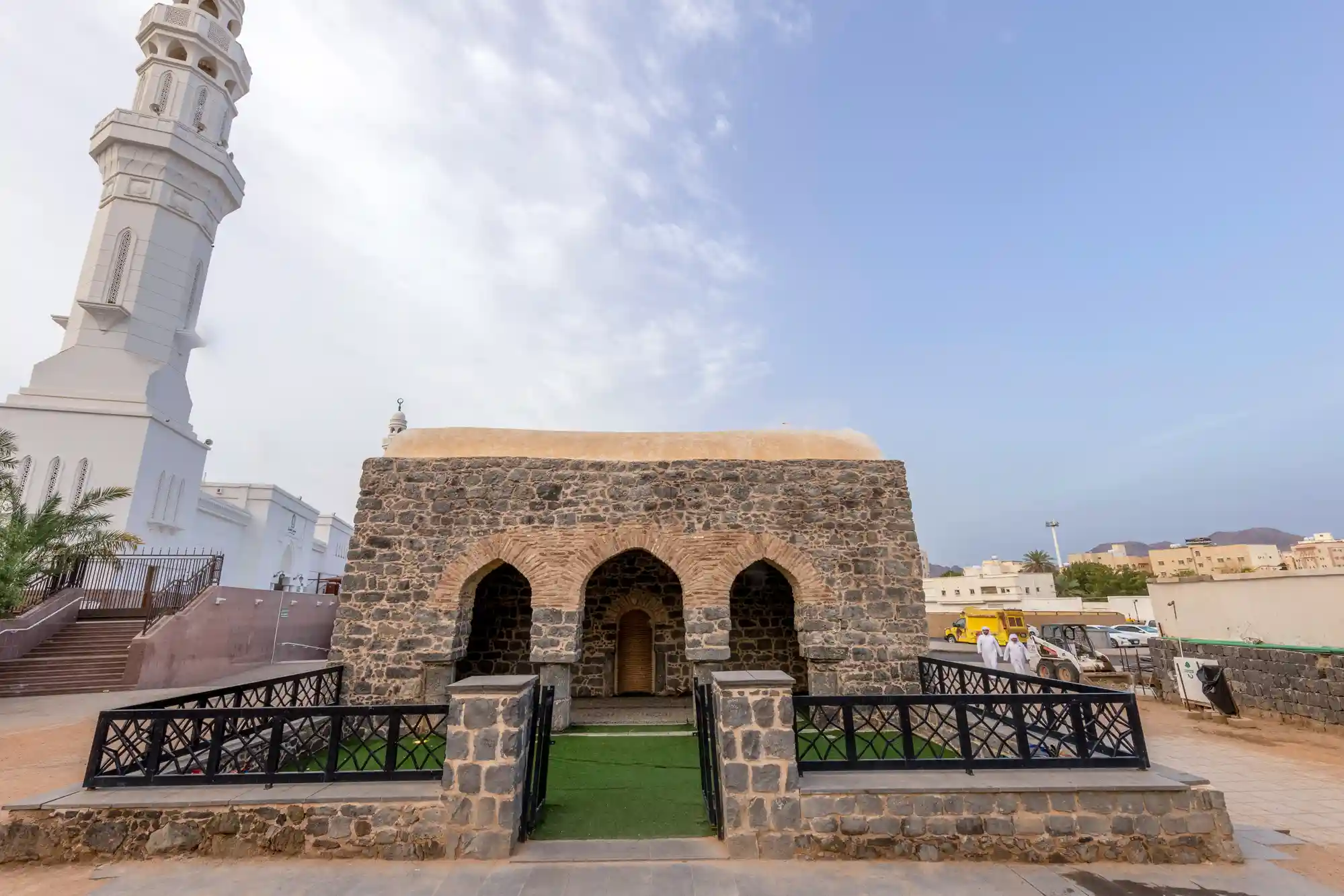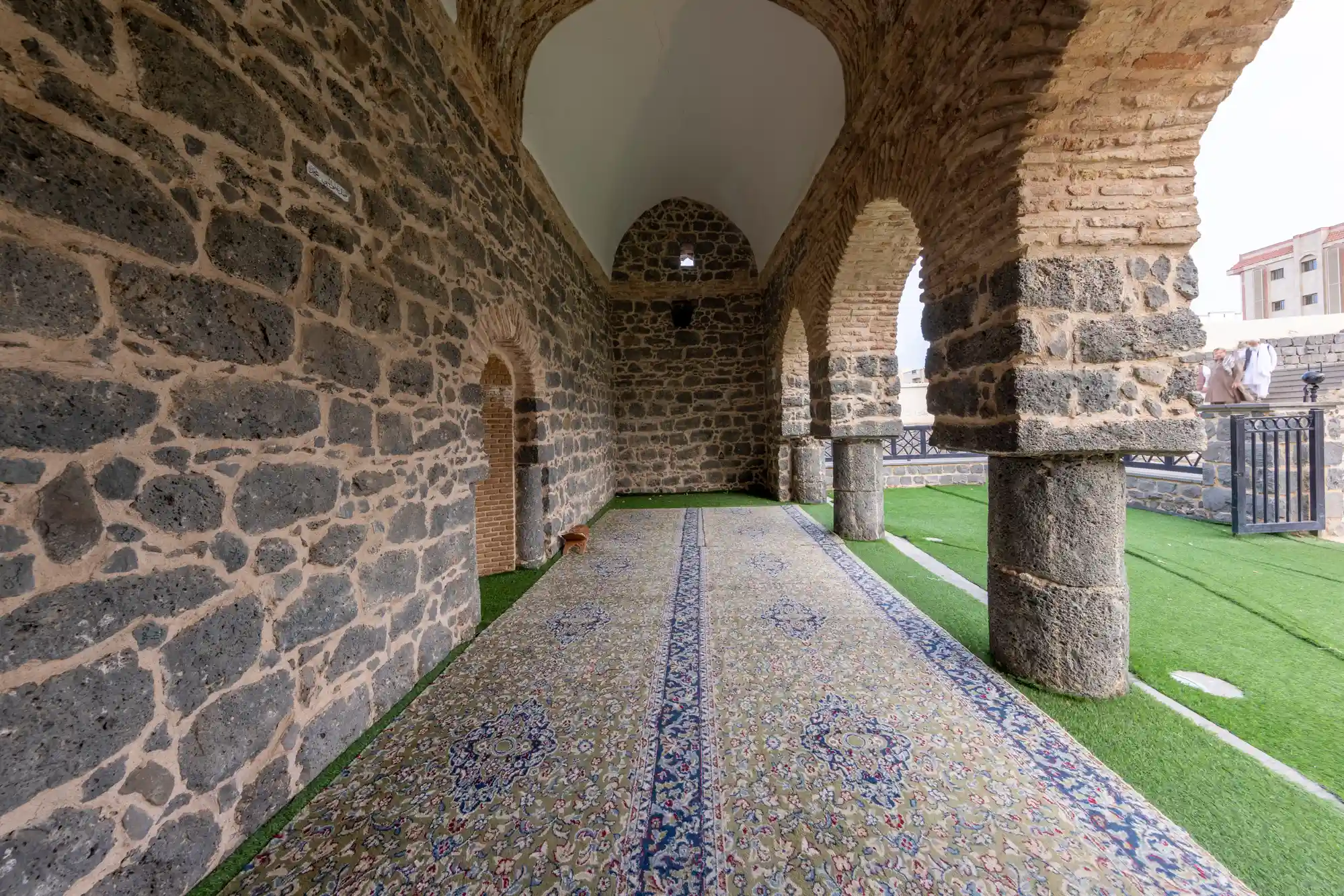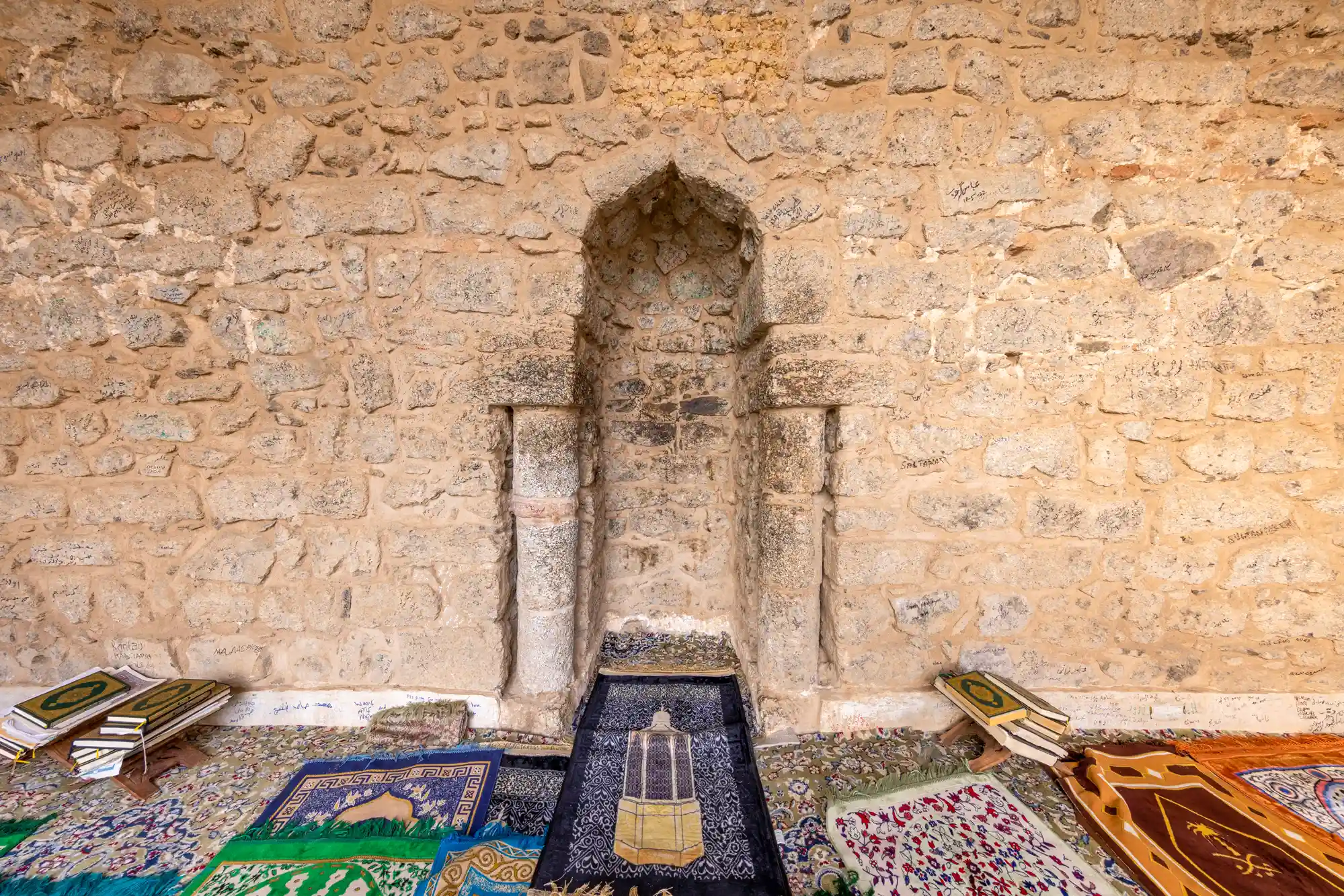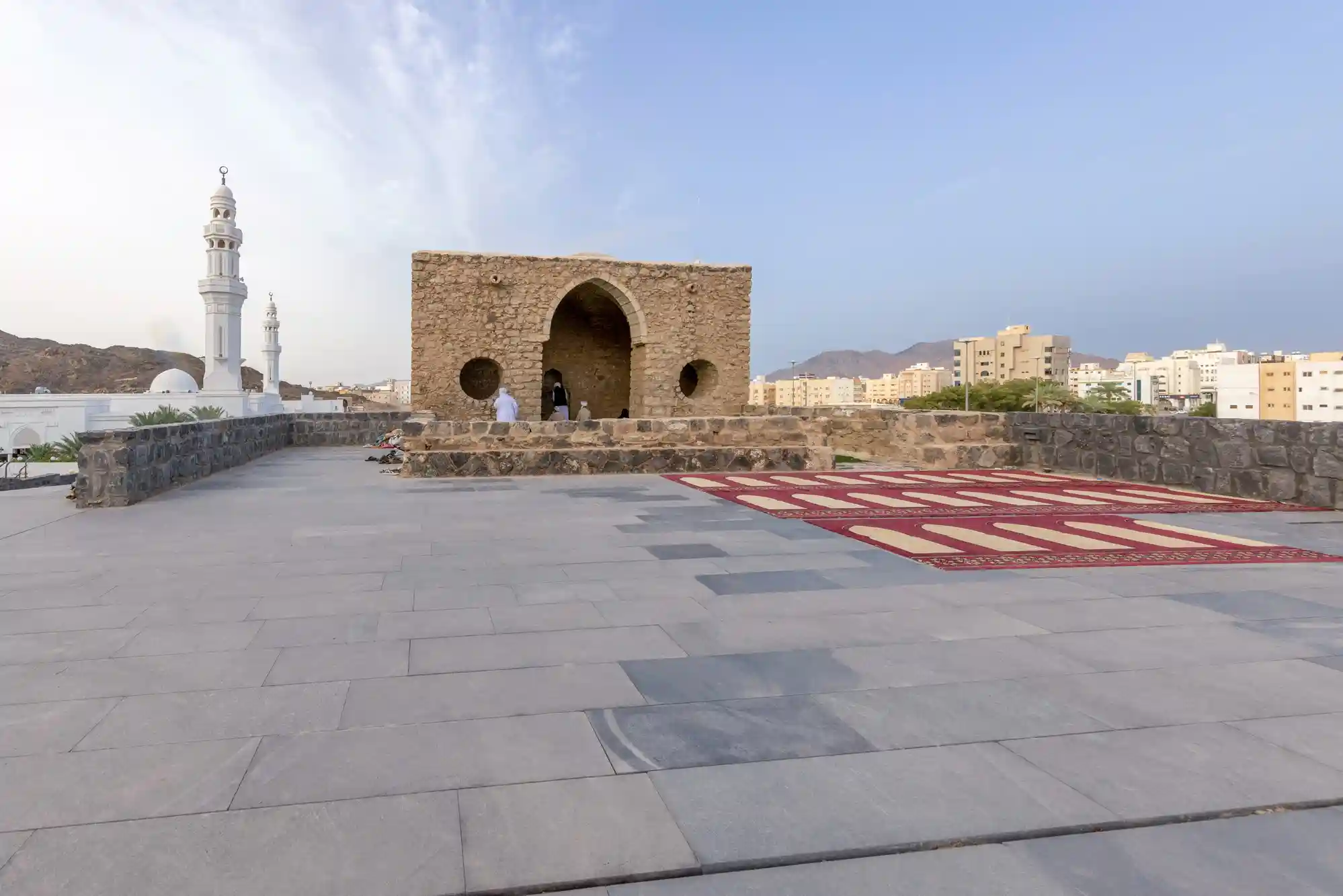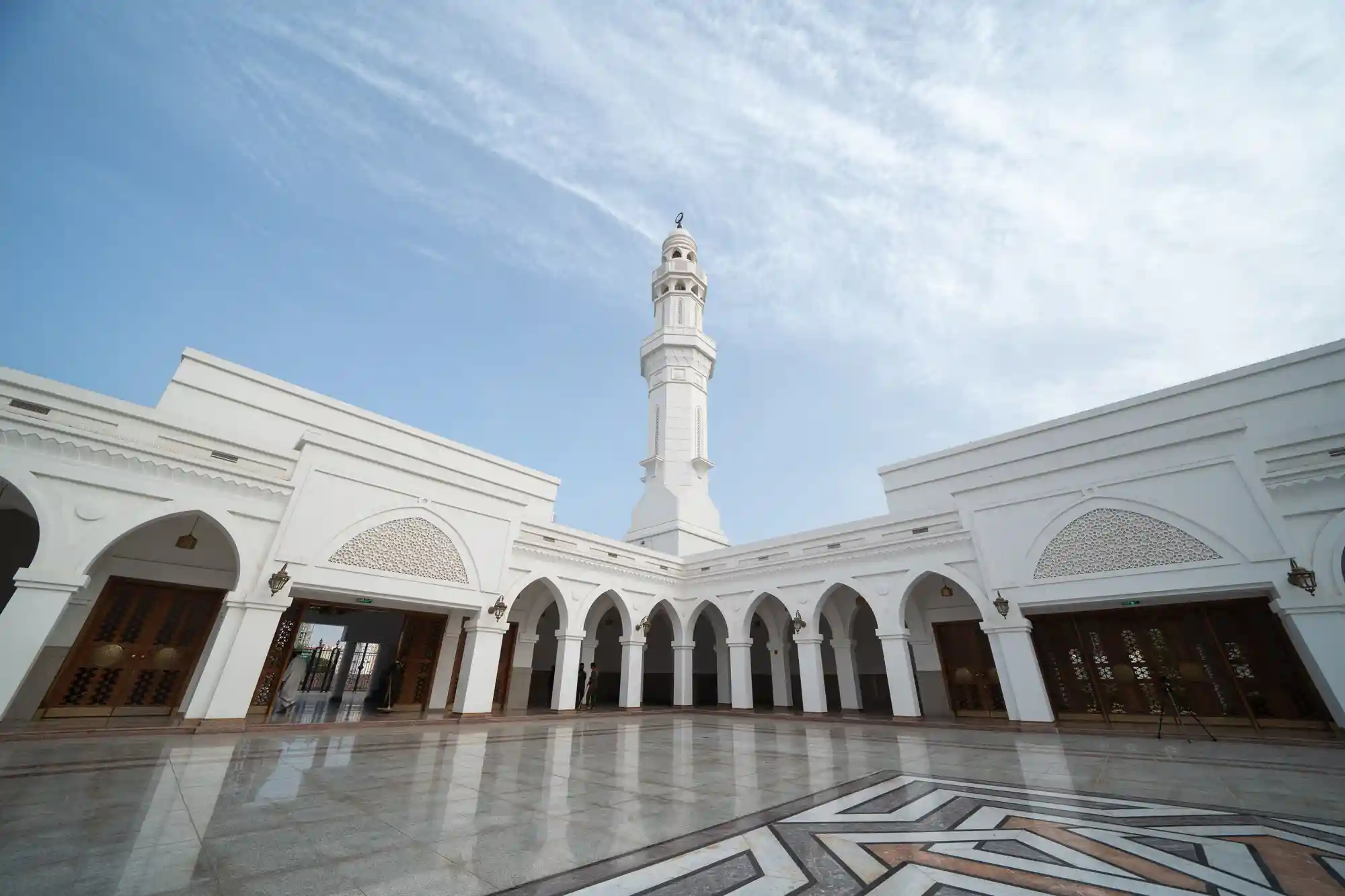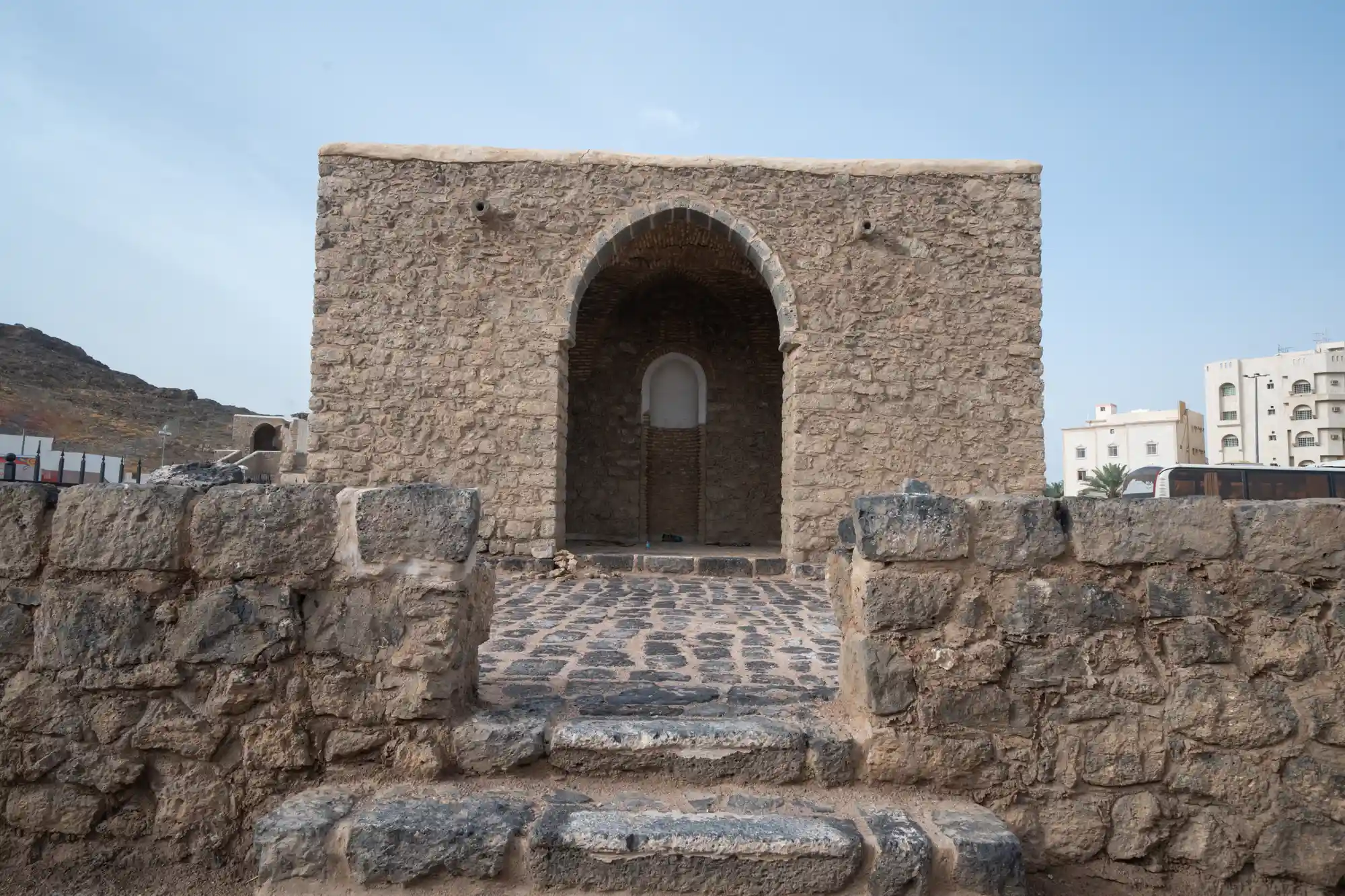A Brief Description:
The Seven Mosques were built at the foot of Sila' Mount, where Muslims defended Madinah valiantly during a battle called the Battle of the Trench (the Battle of the Confederates). The neighborhood is now called "Al-Fateh neighborhood". Other names of the place familiar to the people are Al-Seeh, The Trench, and Sila' Mount.
Their History:
These mosques were built after the era of the Prophet (ﷺ) and his companions, in commemoration of this memory and the companions who had a prominent role in the event. So, the mosques were named after them. They were built at different times, renovated in the succeeding centuries, and restored in the current era.
The Number of the Mosques:
These mosques were known to tourists as the "Seven Mosques," which is a somewhat modern designation. Prior to the fourteenth century, they were called "Al-Fateh Mosques," and were only six. Later, when al-Qiblatain Mosque was added to the tourist visit plan of these mosques due to its relative proximity to them, the mosques came to be known as the "Seven Mosques". However, instead of al- Qiblatain Mosque, some added al-Raya Mosque, located on Thubab Mountain because it is closer to the mosques than al-Qiblatain Mosque, and because it isdirectly related to the events of the Battle of the Trench. Some others add Bani Haram Mosque instead.
Nevertheless, the Battle of the Trench unquestionably occured in this area which people visit to remember those events experienced by the Messenger of Allah (ﷺ), and his honorable companions, demonstrated the sincerity of their steadfastness and their belief in their Lord, and witnessed the glad tidings conveyed by the Prophet (ﷺ) to his
ummahof the spread of Islam beyond the Arabian Peninsula.
The Seven Mosques at Present:
Currently, there are only five mosques on the site of the Battle of the Trench since Abu Bakr Al-Siddiq Mosque was demolished and its debris was removed. The mosques were named by the individuals who built them.
The remaining mosques are:
Al-Fateh Mosque:
Reportedly, Al-Fateh Mosque was built in the place where the Messenger of Allah (ﷺ), on the day of the Battle of the Trench, prayed to his Lord to grant victory to the Muslims. The location is on a hillock on the western slope of Mount Sila'. It was narrated that "The Messenger of Allah (ﷺ) supplicated his Lord in this mosque three times: on Monday, Tuesday and Wednesday. His prayer was answered between the two prayers on Wednesday, so the good tidings were recognized on his face."
The current building was constructed of basalt and limestone. It consists of a hall, extending from east to west for about 8.50 meters. It is about 3.50 meters wide, and 4.50 meters high. In the middle of the Qibla wall and on the axis of the building,a small Mihrab was erected. The northern wall of the hall overlooks a small walled space measuring 8.50 meters from east to west and is 6.50 meters wide. This mosque is the largest of the seven mosques.
Salman Al-Farisi Mosque:
Salman Al-Farisi (RA) is the companion who advised the Prophet (ﷺ) to dig the trench, after which the battle was named, in order to protect Madinah from the attacks of the enemies.
The mosque consists of a rectangular hallway and a ceiling in the form of a circular vault. The walls and ceiling of the building are made of basalt stone. Its length from north to south is about 7 meters and from east to west about 8.50 meters.
Ali ibn Abi Talib Mosque:
It is located on a high, rectangular hillock, and consists of a rectangular hall whose walls are made of basalt stone. The mosque is 8.5 meters long and 6.5 meters wide.
Omar Al-Farouq Mosque:
The mosque was built in the form of a rectangular hall, and has a wide, open space. It is eight degrees above the ground, and its construction method is identical with that of Al-Fateh Mosque.
Saad ibn Moadh Mosque, currently called Fatima Al-Zahra Mosque:
The mosque is comprised of a rectangular plot surrounded by a wall about two meters high. The mosque is unroofed, and its length from east to west is 2.6 meters, from south to north, 35.3 meters, and its internal area is 2.21 square meters.
In 1428 AH, a mosque was built next to those mosques to meet the need of local people and tourists for a mosque to pray in. It was built on an area of 4,237 square meters, and can accommodate about 2,000 worshipers in the men’s section and 500 in the women’s section. In addition to the attached mosque facilities, it also includes outdoor yards that can accommodate about 500 worshipers.
Their Access:
The seven mosques are located north of Madinah, about 2 km away from the Prophet’s Mosque, and are open to visitors throughout the day.
